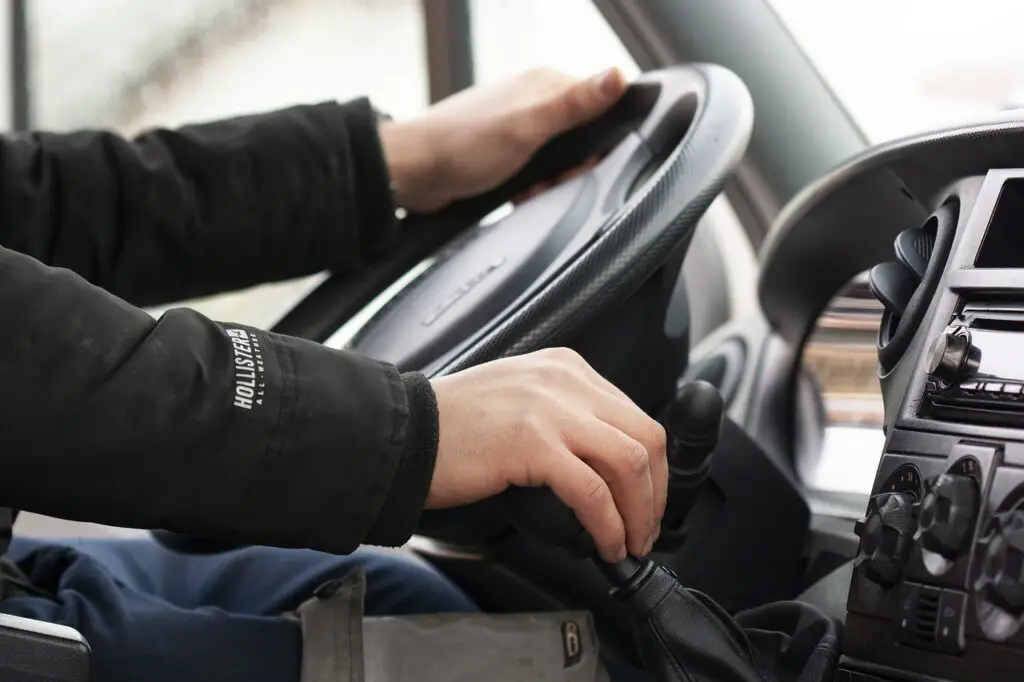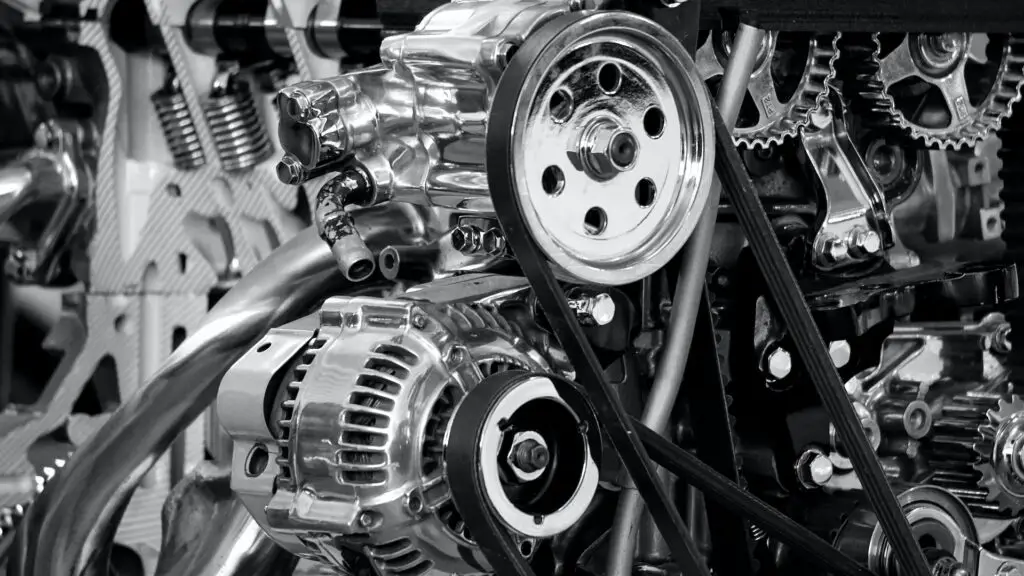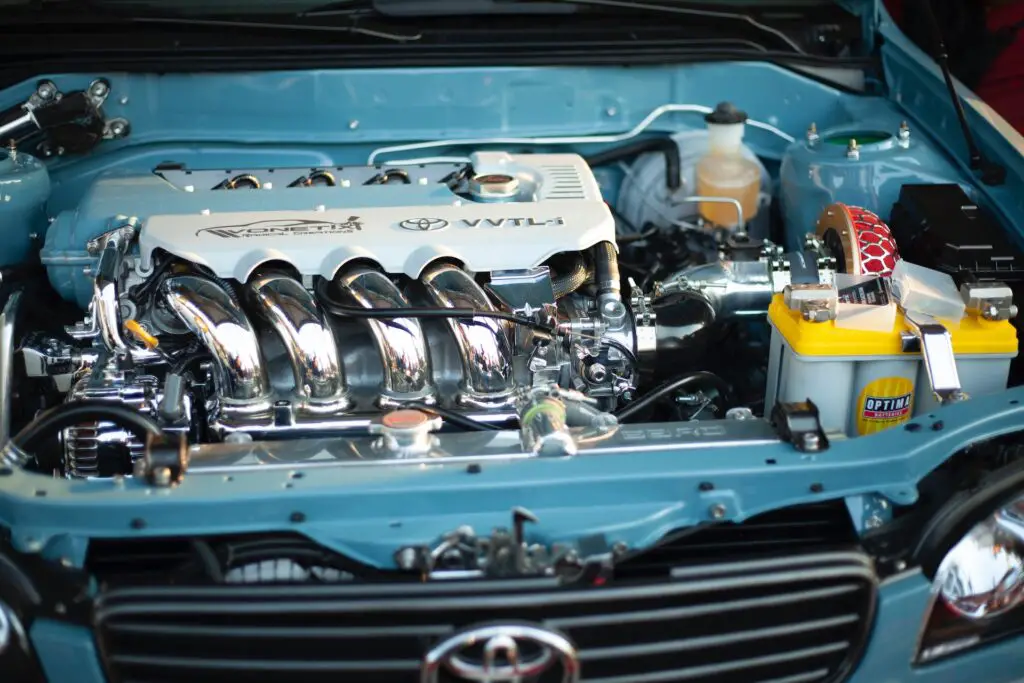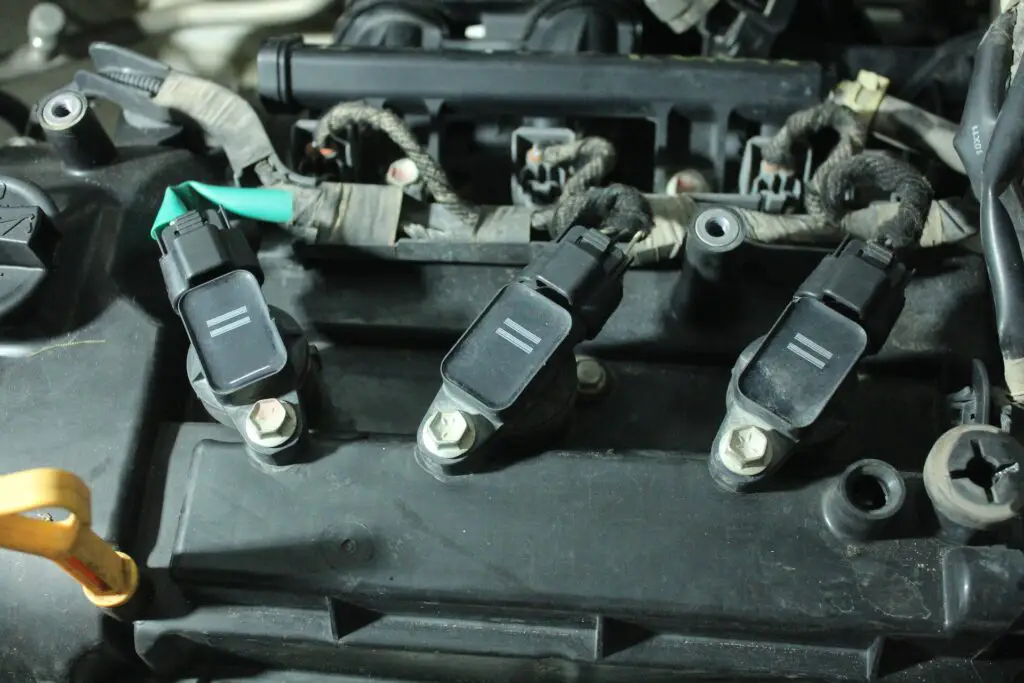Even while it might appear odd, this circumstance isn’t as unusual as you might believe. It’s not always the end of the world when your car shakes at idle but smooths out while driving, as you would experience when traveling through crowded cities with several stoplights, for example.
It’s always best to address difficulties methodically, as with any issues. Is the vehicle physically laboring if it shakes at idle due to low revs? Or is it still shuddering but functioning perfectly?
Does your model have any well-known issues, or have you recently observed something acting strange? When attempting to determine what is happening, each of these should be considered.
The first and most crucial thing to do if this occurs to you is to maintain your composure. Keep your foot just a little bit on the accelerator if you think the car is about to stall so the engine has just enough power to keep running.
If the vehicle stalls, try your utmost to restart it and stop in a safe area away from the flow of traffic.
I’m going to discuss some of the most likely reasons why a car shakes at idle but smooths out while driving in this article. My experience with this occurred a few years ago.
Table of Contents
Car Shakes at Idle But Smooths Out While Driving: Why Does This Happen?
When a car shakes at idle but smooths out while driving, it’s typically an indication of one of the following: a misfire, broken engine mounts, clogged fuel intake, timing belt, filthy or damaged spark plugs, throttle body issues, or problems with the air intake system.
Most of them, especially at idle, will result in decreased engine power. However, the output can feel approximately the same if there are issues with the engine mounts. Therefore, if your car shakes at idle and then smooths out while driving but isn’t experiencing any power loss, you should check the engine mounts first.
The rev counter is one of the most important things to check when idle. Is the rev counter lower than normal when the car starts to shake? For instance, the average automobile ticks over between 600 and 1,000 rpm.
Let’s say the speed is 100 or 200 rpm lower than normal. In that situation, the shuddering sensation is caused by the car’s unsuccessful attempts to keep the engine’s spinning momentum.
Any variations in speed cause a significantly lesser movement in momentum within the motor when the vehicle is moving. This could be the reason why the car shakes more when idling but smooths out when idling faster.
Consider a person working out for a simple analogy. They walk slower, more laboriously, and with greater effort as they become more exhausted. On occasion, they may even begin to shake their arms or legs.
Before, momentum might have kept them moving, but now that it’s gone, they’re having trouble. This is similar to what happens when your car experiences a related malfunction and begins to shake while the engine is idle.
Let’s now discuss these points in detail.
1. Missing or Loose Gas Cap
One of the most frequent reasons why a car shakes at idle but smooths out while driving is because the gas cap isn’t on snugly enough to prevent air from leaking into the intake. Your engine needs to work harder to continue operating when it occurs.
This is because it needs to force air into the space where it is operating. After all, the intake creates a vacuum there.
When the gas cap is on too tightly for an extended period, some fuel evaporates into carbon particles rather than being burned cleanly, which can also cause carbon lock. Everything becomes more challenging as a result, notably starting the car.
Check your fuel cap and replace it if it appears to be in good condition to determine whether your gas tank is to blame. Add a gas cap to your basket right now; you’ll be pleased you did. The price of a gas cap is negligible in comparison to the cost of rebuilding an engine because of carbon lock.
2. Loose Battery Cables
Another reason why a car shakes at idle but smooths out while driving is a loose battery. There won’t be enough electricity to help start the engine if your battery wires are slack.
It may result in a variety of problems, such as a rough idle, or it may even keep the car from starting at all. Everything needs to be tightly connected because you’re working with an electrical system and you need to allow for free flow of electricity between parts.
After changing your battery, if you see any connectors aren’t correctly tightened down, this can be the source of your problem.
Misfires might also result from it. Because the wrongly firing cylinders don’t produce enough compression for the engine to run smoothly, if your automobile has misfired, it may shake when it is idle.
These issues will disappear when you accelerate since it can make use of the additional power to function properly. Before changing any other components of your ignition system, make sure to inspect your spark plugs and wires if you have any suspicions of a problem.

3. Broken or Loose Engine Mounts
Another factor in why your car shakes at idle but smooths out while driving could be because of loose or damaged engine mounts.
Engine mounts, as the name suggests, install your engine inside the chassis. They serve as a type of hybrid between legs, arms, and suspenders while holding it in place.
Your engine is not just supported by a flat piece of metal on the bottom. The cause? Nobody would ever desire to drive their car for more than a few miles because the vibrations and shaking would be so excruciating.
Car manufacturers utilize engine mounts to sort of hold the engine in space rather than placing it on something. This indicates that vibrations are much weaker. The mounts are also made to attenuate the forces passing through them, which further lessens the sensation of vibrations.
Will Bad Mounts Impact Car Performance?
The overall performance of the car won’t be much impacted if one breaks. In other words, you wouldn’t typically anticipate to see a big decrease in power output. However, it would be possible if the engine’s performance marginally decreased, I believe.
However, you would undoubtedly notice the engine’s vibrations much more strongly.
Because there is less activity to divert your attention from it when you are at rest, you may experience this shaking more frequently.
Try shifting into neutral if you drive an automatic—but not while you’re going! Park first in a secure area. If the shaking seems to stop, the problem could be with the transmission or engine mounts.
You’ll likely need to take your automobile to a mechanic to get an engine mount repaired. It will be necessary to raise the engine out of the way to perform a big replacement or repair. I’d advise leaving this to the professionals unless you have access to an engine hoist and are familiar with engine mounting.
4. Fouled Spark Plugs
Next on the list of reasons why a car shakes at idle but smooths out while driving is defective spark plugs. Carbon build-up is typically the cause of spark plug failure.
The spark plugs generate sparks (fires) that ignite the fuel or air mixture inside the cylinder. Whether it be diesel or gasoline, fuel is made up of numerous lengthy hydrocarbon chains. As a result of their ignition, carbon is produced.
The exhaust valve is where the majority of it escapes, but some will coat the spark plug.
The carbon coating can completely prevent the plug from sparking or merely lessen its efficiency.
Technically speaking, this would also be considered misfiring. For more details on why it means your car shakes at idle but smooths out while driving more quickly, please refer to the explanation above.
Unless you have a large, vintage V-engine, changing the spark plugs on most cars is one of the easiest tasks. Cheap spark plugs aren’t a good investment because they’ll break down considerably sooner and cause a ton of other issues. Purchase mid-range or premium products whenever possible.
Standard spark plugs typically cost between $5 and $7 apiece, but more expensive iridium plugs can cost as much as $9, $12, or even $17 each.
5. Worn Out Throttle Body or Sensor
Another reason why your car shakes at idle but smooths out while driving is because of a worn throttle body or sensor. My car experienced this exact issue, and the throttle body was found to be to blame.
Most of the time, it operated without any problem, but when left motionless with the engine running, it would start to malfunction. It nearly appeared as though it would suddenly shake, and gasp for air, occasionally for a considerable period with the revs falling much below the typical idle rate.
The system would finally reset itself or I would blip the throttle, increasing the revs and appearing to reset the system.
Additionally, I occasionally and inconsistently experienced throttle delay.
This baffled me for a while, but I eventually got to work to examine a few things. After eliminating the spark plugs and any possible misfires, I focused on the throttle body.
You only need an affordable bottle of throttle body cleaner, which I picked up from the neighborhood parts store. Just make sure you know how to clean the throttle body before deciding to clean it yourself. Then, I cleaned the throttle body and its associated components, including the throttle plate, by removing the throttle body from the engine’s top.
When you press the throttle pedal, a piece of metal called the butterfly valve rotates. More air can pass by it and into the engine as it turns faster with increased pedal pressure.
NOTE: Despite it appearing delicate and breakable, the butterfly valve—the revolving metal face inside the throttle body—is a pretty durable piece of equipment. Nothing ought to break. Not that you need to be too cautious, mind you!

What I Did to Fix the Throttle Body
I cleaned off everything, reconnected everything including the TPS, and the throttle position sensor, and then I fired it up. It also did work. I haven’t experienced any problems since this happened three or four years ago.
I must admit that I’m still unsure of exactly what went wrong. The throttle plate or the TPS may have been hampered by dirt, dust, or grease that was cleaned by the parts cleaner. The TPS might have been reset by simply unplugging it and plugging it back in. I assume this did reset everything.
In either case, you ought to inspect and clean the throttle body. You shouldn’t pay a lot for it. Just be careful not to lose any connecting bolts or break anything. Your issue might be resolved by it.
6. Damaged or Slipped Timing Chain or Belt
The next reason why a car shakes at idle but smooths out while driving is because of a broken or slipped timing chain or belt. A cambelt, often known as a timing belt or chain, is responsible for aligning the positions of the pistons with the appropriate valve positions.
The engine maintains accuracy over hundreds of millions if not billions, of rotations by connecting the crankshaft and camshaft with an ingeniously straightforward mechanical gear or pulley arrangement.
However, mistakes do happen from time to time.
The majority of manufacturers now favor timing belts over chains. Even though they are also lighter and quieter, they simply do it because it is cheaper. The highly competitive current automotive market necessitates every dollar from manufacturers.
Timing belts frequently experience the common problem that befalls all belts: they begin tight but gradually lose tension and slacken. They occasionally rip or crack.
You’ll need to take it in for a specialist repair when this occurs, which it will at some point. I wouldn’t advise attempting to complete this task on your own. If the timing is incorrect, you may need to replace the engine or the entire car may be written off.
The timing chain can occasionally jump or slip, somewhat like a bicycle chain. As you might expect, chains often last longer than belts, although they too can stretch with use. Once more, you should get this corrected by taking your car to a shop.
You may get vibrations throughout the entire automobile if things aren’t aligning correctly. Additionally, the engine will feel slow and almost painful.
How Can You Detect and Fix a Broken Timing Chain or Belt?
If you are unfamiliar with engines, it may be challenging to identify a misaligned timing belt or chain. However, if it’s broken or completely damaged, it will undoubtedly be messing with your revs in some way.
NOTE: The drive or fan belt and the timing belt or cambelt are frequently misunderstood. The timing belt, which connects the crankshaft and camshaft, essentially controls the timing of the valves.
On the majority of engines, you shouldn’t be able to view it without slightly disassembling the engine. The drive belt, on the other hand, is the one that is visible when you open your hood. It links the power steering pump, air conditioning compressor, and alternator to the crankshaft.
Vibrations that are more noticeable at idle than at speed could be caused by a worn-out or broken timing belt. This would be the result of the same factors as those previously discussed.
Less force acting on the vehicle makes things more obvious. To maintain motion without your manual throttle input, the engine mechanically depends on itself.
What’s the main lesson? Take your car to a shop you trust if you have any questions about a timing chain. A timing belt problem could be the cause of your automobile shaking at idle but smoothing out while you’re moving quickly. The cost of replacing a timing belt might be high.
7. Problems with the Catalytic Converter
The next possible explanation for why your car shakes at idle but smooths out while driving is catalytic converter-related issues. Before they are released into the atmosphere, the dangerous exhaust fumes from the combustion chamber are transformed into less hazardous gas by a catalytic converter.
When the automobile is idling but not in neutral, it will shake if it is clogged or not functioning properly. Occasionally, whether in neutral or not, the car may shake while idling.
If your vehicle’s catalytic converter is the issue, you can also hear a tinny clattering sound when it is idling. If your catalytic converter is broken, your car won’t pass a test to get in.
While you can still drive, your fuel economy will be dismal.
You must buy a replacement catalytic converter and hire a specialist to install it if you want to repair the catalytic converter yourself.
8. Misfire In the Engine
Your car shakes at idle but smooths out while driving because of an engine misfire. A severe loss of power, which you’ll notice both at idle and when driving, and a general shaking of the automobile are the main symptoms of a misfire.
When a cylinder misfires, the engine shakes because the natural equilibrium of the engine has been upset. Engines produce power in a smooth, efficient manner because of their inherent balance.
Because of this, most engines such as the inline-4, straight-6, V8, and W16, have an even number of cylinders. Typically, one cylinder rises while another descends. This equalizes the forces, giving the occupants more power and a smoother ride.
NOTE: Of the three primary engine types, Boxer or Flat engines are the most naturally balanced. Inline or Straight engines come behind them, with V and W engines coming in last. To make V and W engines balanced, additional parts known as balancing shafts are required.

How a Misfire Feels
A misfire causes the engine to shake, which causes the rest of the car to feel as though someone was suddenly standing in front of it and fast pushing it up and down. Through the powertrain, the vibrations are extraordinarily well transmitted.
In a manual automobile, putting the handbrake on while you park in a secure location, starting the engine, and shifting into neutral are excellent ways to detect a misfire. You’ll typically hear excessive vibrations coming from misfires.
Because the engine needs to work harder to maintain its speed at idle, a misfire is more obvious.
Additionally, because the automobile is stationary at idle, you might notice the shaking more. These forces may work to reduce the engine’s shaking when you’re moving.
Even the sound of the road may subconsciously affect you and keep your attention off the shaking while you’re driving. However, you could be more likely to notice everything if the automobile is still.
It might be wise to take your automobile to a reputable, qualified repair if you suspect a misfire but are unsure.
9. Issues with the Fuel Intake System
Another reason your car shakes at idle but smooths out while driving is issues with the fuel intake system. Fuel and combustion-related problems are closely related to this article’s misfire and air intake sections.
A problem with the gasoline entering the cylinder could result in less power being produced because there won’t be enough fuel burned.
The gasoline injector, for instance, might be broken. There can be a lot of grit or debris present, which might have affected the quantity and quality of fuel and pointed to a fuel filter issue.
It’s possible that the gasoline pump isn’t operating properly. Another possibility is that an intake valve is broken or clogged with debris.
These fuel-related problems may result in the engine delivering a variable amount of gasoline with each rotation. As a result, you’ll experience high-frequency vibrations that roughly correspond to the engine’s rpm level.
Once more, you can certainly detect these vibrations at all levels, albeit perhaps at idle they become more apparent. To continue moving, the engine must exert more effort. You’ll always notice continuously low-performance levels.
10. Issues with the Air Intake System
Another factor contributing to why your car shakes at idle but smooths out while driving is an issue with the air intake system. The throttle body may be directly responsible for issues with the air intake system. Please scroll up a little to read that part if you believe that to be the case.
One of the two components that work together to create power in a car is the air intake. The fuel, whether it be gasoline or diesel, is the other.
It’s similar to covering a candle with one of those snuffer things if anything is preventing the air from getting to the cylinder. The fire extinguishes when the oxygen supply is cut off. That is exactly what occurs in these circumstances.
It will likely just be impacting one or two cylinders to produce shaking, creating an imbalance. My opinion is that a malfunctioning valve is the most likely cause of this.
A valve that doesn’t open fully or at all could suffocate one oxygen cylinder while leaving the others operating normally. This would result in a misfire and vibration that would be audible while your automobile was at rest.
The overall reduction in airflow may also cause the car to struggle. This might occur if the vacuum seals weren’t working properly or if the air filter was absurdly clogged.
The amount of fuel used will also decrease if the MAF (Mass Air Flow) sensor detects less air flowing into the engine, bringing the engine speed closer to tick over.
The engine will shake and shake if the speed falls below the normal tick-over. It can even struggle to restart the engine with significantly decreased airflow and stall. You would need to keep your foot slightly on the gas when stationary to prevent this from happening.
11. Issues with the Oxygen Sensor
The next reason why your car shakes at idle but smooths out while driving is an issue with the oxygen sensor. Your car’s exhaust gas levels are regulated by an oxygen sensor to make sure there isn’t too much or too little oxygen present.
It is crucial at idle because the computer in your automobile uses this data to determine the ideal air-to-fuel ratio.
It can result in a variety of issues, such as a rough idle if it is unaware of what the levels should be. Your car will be more challenging to start if your oxygen sensor is malfunctioning because it lacks the information necessary to know when to fire.
If your oxygen sensor shakes while you are idling or if your fuel economy has decreased, you’ll know that it may be the cause. The car’s computer won’t be able to establish whether your fuel ratio is correct if the oxygen sensor malfunctions because it will provide inaccurate information to the computer.
12. Problems with the Idle Air Control Valve
The last possible explanation for why your car shakes at idle but smooths out while driving is a broken or malfunctioning idle control valve. The amount of air entering the engine at idle is managed by the idle air control valve. If it malfunctions, your automobile won’t run smoothly because there won’t be enough oxygen for it to burn all of the fuel in the cylinders.
The valve also has a tiny vacuum that is managed by the engine vacuum. The engine will continue to idle even if it stops running or if something breaks, like a hose, because there is no vacuum.
If your automobile shakes while the accelerator isn’t being pressed all the way, you may have an accelerator position sensor that is malfunctioning. Your engine may run rough when idling because the car wants to accelerate more than it should when it’s not allowed to.
Another effect is a delayed response when you press on the throttle, which causes the car to lurch forward or backward instead of accelerating smoothly because it takes some time for the engine to respond to your command.
Rough idle and the other symptoms stated above may be brought on by a broken idle air control valve. When it’s malfunctioning, the engine won’t be able to maintain a steady idle speed. Vacuum leaks or issues with numerous hoses and connectors all over the intake manifold may also be to blame.
How Can You Fix Car Shakes at Idle But Smooths Out While Driving?
A thorough and thorough maintenance and repair schedule is essential to address the complex problem of a car shaking at idle. Here are some further, more detailed actions that can be made in light of the previously mentioned potential causes.
1. Examine the Gas Cap
A loose, broken, or missing gas cap is a straightforward but sometimes disregarded cause of engine shaking at idle. Make sure the gas cap closes tightly when closed and look for any obvious damage. Replace the gas cap as needed.
2. Fix the Fuel Intake System
To ascertain what services are required, examine the gasoline intake system. During this inspection, it’s a good idea to check the fuel pump as well.
Depending on the requirements of the vehicle, fuel induction services differ. Sometimes all that’s needed is a fuel induction cleaning. Sometimes it’s also necessary to service the intake valves, throttle plate, and intake manifold.
The price of a full-fuel induction service may be as high as $160. Some people decide to use fuel injection cleaners to avoid this expense, however, that doesn’t always fix the issues.
3. Clean or Replace the Idle Air Control Valve
The Idle Air Control Valve may develop carbon deposits, which would interfere with its primary function. This problem can frequently be solved with a thorough cleaning utilizing a throttle body cleaner. But you might need to replace the valve if it is harmed or worn out.
Both the IAC and the throttle body can be cleaned. It is frequently located on the intake manifold near the throttle body.
The IAC can only be replaced if cleaning it doesn’t work. The final price could range from $150 to $550. But often, $60 to $350 of the cost is made up of the parts.
4. Diagnose the Throttle Position Sensor
Use a digital multimeter to test the throttle position sensor. This device allows you to check the sensor’s functionality by measuring the voltage output of the sensor as you gradually open and close the throttle. Any abrupt changes in the voltage reading could be an indication that the TPS needs to be replaced.
5. Assess the Throttle Body and Clean It
The throttle body may develop deposits over time that obstruct airflow. The throttle body can be removed and cleaned using the appropriate cleaner. It can be necessary to replace the throttle body if it is worn out or damaged.
6. Examine the Oxygen Sensor Performance
An improper air-fuel mixture may result from an oxygen sensor that isn’t working properly. A diagnostic test can be performed by a qualified mechanic to determine whether the sensor is operating properly. The sensor will need to be changed if it is not.
7. Assess the Timing Chain on the Camshaft
The camshaft timing chain inspection entails more difficult operations and frequently calls for professional knowledge.
A worn timing chain may be the cause of the vehicle’s high mileage or rattling noises from the engine, especially during startup. In this situation, you ought to have the car examined by a qualified mechanic.
8. Change Your Worn Motor Mounts
There is a good possibility that one or both of the engine’s motor mounts are damaged if the engine idles unevenly but otherwise runs smoothly. Pushing the engine in various directions can be used to test whether it is loose.
It must be changed to stop the shaking caused by a damaged motor mount. Motor mount replacement typically costs between $250 and $800. The fee varies according to how challenging it is to reach the mounts.
Motor mounts need to cost between $60 and $180. The majority of the cost will be labor, which could raise the final price by $170 to $580.
9. Change or Clean the Fouled Spark Plugs
There is a good probability that the spark plugs are damaged if your automobile misfires when it is idle. You can clean the spark plugs if they are dirty. To clean the electrode of debris, use a wire brush and a spray-on cleaning designed for plugs.
However, it could be preferable to replace tainted spark plugs given the cost. Spark plugs typically cost between $5 and $25 per piece for the majority of vehicles. The labor to replace plugs is the most expensive aspect, particularly if they are difficult to reach.
10. Change Worn Hoses and Belts
Depending on whatever component is damaged, replacing a worn belt or hose can cost more or less. A serpentine belt replacement, for instance, might cost $150 to $350. The labor may run from $80 to $230, although the belt alone may just cost $30 to $80.
The cost of replacing a vacuum hose, however, might range from $170 to $1,500. The cost is based on the location of the vacuum leak and how challenging it is to reach it.
FAQs
What Causes My Car to Shake When Idling?
Your engine mounts may be damaged if your car shakes a lot when it is idle. Especially when the car is idle, the engine mounts of the vehicle serve to absorb vibrations.
You will experience the same amount of vibration when the engine is idling since damaged engine mounts are no longer able to automatically attenuate vehicle vibrations.
Shift into neutral (N) and wait a bit to observe if the engine mounts are damaged if the car vibrates while the A/C is on. If the vibration lessens, the motor mount is probably destroyed.
Is It Okay for a Car to Shake a Bit When Idling?
No matter how tiny, shaking while a car is idling is extremely uncommon. Your engine mount may be damaged if your car shakes when it is idle.
The car may idle unevenly due to faulty engine components including timing belts, spark plugs, or fuel injectors.
Take the time to find any potential issues and prevent any risk or damage if the car shakes when parked with the air conditioner on. Consult a specialist if you are unable to resolve the problem yourself.
Why Is My Car Driving Perfectly But Idling Abnormally?
If your automobile idles roughly but drives smoothly, you probably have a rough idle. Vacuum lines, changes in the amount of air entering the engine, irregularities in the ignition, and many other things are typically to blame for this.
Is Driving When the Car Is Shaking Safe?
Driving a wobbly vehicle is risky and may result in further automotive damage. It’s wise to be cautious and have your car examined by a mechanic if you’re unsure of what caused the vibration. Once you determine what is causing the vibration, you can take further action to address the problem and resume safe driving.
Is It Okay to Drive a Car If It Idles Roughly?
The valves and pistons won’t move correctly and the engine may not run properly if the engine tensioner or timing belt is damaged. Until the issue is rectified, avoid driving in such circumstances.
Similar to this, an engine vacuum leak needs to be fixed before driving. This is because once combustion begins, a sufficiently large port may exert too much pressure inside the cylinder and prevent air from being expelled.
The Conclusion
The majority of the reasons why your car shakes at idle but smooths out while driving and the fixes for the issues have been discussed previously in this article.
It is essential to address mechanical issues as soon as possible to prevent them from developing into more challenging issues. Following the advice given above will help you solve this problem, or you can seek the help of a qualified vehicle mechanic.
RECOMMENDED TOOLS
Here are our recommended tools from Amazon. The tools have been tried, tested, and approved by our experts. You can purchase them and use them to troubleshoot and fix your car.
- Auto Jump Cables
- Read – Reset OBD Diagnostics
- Professional OBD Diagnostics
- Professional Car Jacks
- Socket Wrench Ratchets
- Mechanics Tool Set
- Rechargeable LED Work Lights
- Impact Wrench Kit
- Digital Multimeter
- Battery Charger
Motor Pinnacle is a participant in the Amazon Associates Program. We will earn a small commission when you purchase any product using our affiliate links. This is at NO added cost to you. By utilizing our affiliate links, you are assisting us to keep this blog running; we are so grateful for that.

Hi, I’m Maurice Nyangano. A certified auto expert who has been in the business for over fifteen years and has worked as a service writer for five years. I take great satisfaction in providing factual information in my buyer’s guides, comparisons, expert repair guides, and car reviews. I write automotive blogs to assist fellow auto experts and car owners in troubleshooting various car issues and offering fixes.






